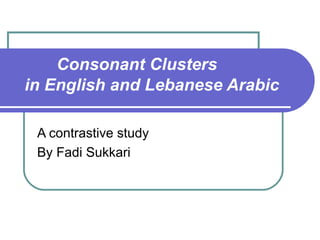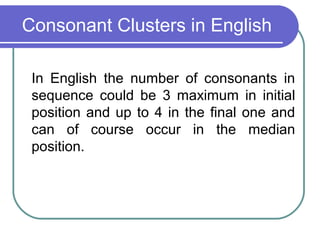This document contrasts consonant clusters in English and Lebanese Arabic. It defines consonant clusters and discusses their structure and occurrence in each language. English allows initial clusters of up to 3 consonants and final clusters of up to 4 consonants. Lebanese Arabic allows much longer initial clusters of up to 7 consonants. The document analyzes specific cluster patterns and exceptions in both languages. It concludes that the phonotactic rules of one's native language influence how new languages are pronounced.






















